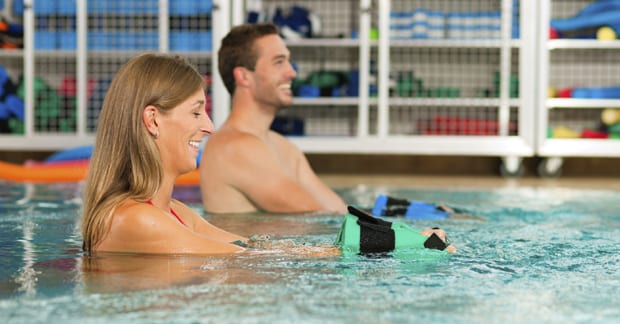Fibromyalgia (FM) is one of the most common conditions associated with chronic pain affecting up to 5% of the population. It is characterized by pain in the muscles and joints and is associated with generalized, whole body muscle stiffness, body aches, sleep disruption, and headaches. Stress is often a component of FM. Women are 2-3 times more likely to suffer from FM.
So, the question is raised, “What can I do to reduce the pain and suffering that I feel from FM?” The answer is multifactorial as there are many treatment approaches found to be helpful. Perhaps the most prevalent is exercise. This seems counter-intuitive since the presence of pain is usually a reason to rest or reduce activity. However, not staying active can lead to de-conditioning or weakening of muscles, stiffness in the joints, lowered aerobic capacity, and a host of negative physical and mental effects that can have a negative impact on quality of life. Because many patients with FM are out of shape, the worst approach with exercise is jumping into it too quickly. The post-exercise soreness felt when people first engage in a new activity can be profound if the introduction into exercise is too vigorous.
Therefore, the key to success is realizing pain thresholds are reached faster in the FM patient and hence, a slow but steady introduction into exercising is needed.
For example, start out with a walking program of 5 minutes, 1-3 times a day, and gradually increase it to 10, 15, 20, and eventually 30 or more minutes per session. Stretching exercises of the overly tight postural muscles like the hamstrings, calf muscles, hip flexors, lower, middle, and upper back muscles are also very helpful. Applying light resistance during the stretch using a “slow motion” approach improves results.
In general, low-impact activities like water exercise, swimming, bicycling, and using an elliptical machine (low setting) are great options. Using light dumbbells/hand weights emphasizing high rep/low weight is also very effective.
Another highly successful type of exercise are those focused on improving balance. Using a rocker board, wobble board, gym ball, and/or foam pad to incorporate balance challenges into the exercise process is very effective. Consistent exercise is a key to success.
Also, don’t set your goals too high as you may be setting yourself up for disappointment. Rather, make realistic goals and “grow” with the exercise process, changing and modifying goals on a monthly or quarterly basis.




